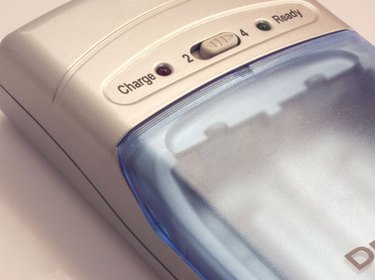
An 18 volt battery will consist of 15 individual cells with an output of 1.2 volts each. The cells are wired in series as this combines the output voltage from each cell. They are likely to be nickel cadmium (NiCad) or nickel metal hydride (NiMH) cells as these produce 1.2 volts whereas lithium polymer (LiPo) batteries produce 3.7 volts per cell. Always ensure the charger and battery is compatible. Using the incorrect charger to charge your 18 volt battery could cause damage. Charging your battery is a simple task.
Step 1
Connect the input jack from your charger to the 18 volt battery or insert the battery into the charger, depending on the type. Set the charger to the correct charge rate, if it's a variable rate charger. This needs to be set at 18 volts. Do not set it any higher: you will damage the battery.
Video of the Day
Step 2
Plug in the charger to the electricity supply and turn the charger on. Make sure it's not greater than 18 volts.
Step 3
Let your 18 volt battery charge for several hours, or until a light illuminates telling you the battery is charged. If you have a meter, your battery is charged once the charge rate has dropped to under 5 volts.
Step 4
Unplug the charger from the electricity supply and then remove the jack or the battery from the charger. Your 18 volt battery is fully charged.
Video of the Day